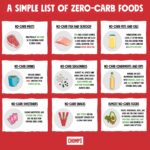Bread, a long-standing staple in diets worldwide, has faced scrutiny in recent years. With the rise of low-carb diets, many question its place in a healthy lifestyle. But is bread a healthy food? Let’s delve into the nutritional facts and dispel common misconceptions.
While some diets demonize bread, the truth is that it can be a valuable source of essential nutrients. The Grain Foods Foundation emphasizes that bread provides folate, fiber, iron, and B vitamins, all crucial for maintaining optimal health.
However, it’s essential to understand the nuances of bread consumption. Eating bread in isolation might not offer a complete nutritional profile. But, when incorporated strategically into a balanced diet, bread can contribute positively to your well-being.
:max_bytes(150000):strip_icc()/no-knead-frig-bread-dough-1244-7a46908c4f7b4c9089c786ed6a1783a5.jpg)
Bread’s Nutritional Breakdown
A single slice (25g) of whole-wheat bread contains the following approximate nutrients, according to the USDA:
- Calories: 77
- Carbohydrates: 13g
- Fiber: 2g
- Sugar: 1g
- Protein: 4g
- Total fat: 1g
- Saturated fat: 0g
- Sodium: 141mg
The Health Benefits of Bread: More Than Just Carbs
Boosting Fiber Intake for Digestive Health
Bread, particularly whole-wheat and whole-grain varieties, offers a significant dose of dietary fiber. Fiber plays a vital role in promoting healthy digestion, supporting gut health, and aiding in weight management.
Kristi Ruth, RD, LDN, highlights the benefits of whole-grain bread, stating, “As dietitians, we often recommend whole-grain bread because it traditionally contains more fiber, which aids in digestion and will help you feel full longer.”
Two grams of fiber in one slice equates to around 7% of your recommended daily value. A sandwich made with two slices can substantially contribute to your daily fiber needs, especially when paired with fiber-rich fillings.
Elana Natker, M.S., RD, spokesperson for the Grain Foods Foundation, points out, “40% of dietary fiber intake comes from grain foods. Cutting out grains [like bread] would take out fiber that people are needing and getting from grains.”
While fruits and vegetables also offer fiber, eliminating bread limits an easily accessible source. The Dietary Guidelines for Americans indicate that most adults don’t meet their daily fiber recommendations, making bread a helpful option.
Unlocking a Spectrum of Essential Nutrients
Beyond fiber, bread offers an array of essential nutrients. Iron, B vitamins, protein, calcium, thiamine, manganese, and zinc are all present in varying amounts. White bread is also a notable source of folate, particularly important for women during pregnancy.
Natker emphasizes the importance of folate, stating that child-bearing women who restrict carbohydrates are more prone to deliver babies with neural tube defects due to inadequate folic acid intake.
Potential Risks to Consider
Fiber Overload: Digestive Discomfort
While fiber is generally beneficial, excessive intake can cause digestive discomfort for some. Individuals with conditions like IBS may need to follow a low-FODMAP diet, limiting fiber-rich foods.
Even without a diagnosis, consuming large quantities of high-fiber bread may result in bloating, gas, and cramping, especially if you are not accustomed to it. Starting with white or sourdough bread, which has less fiber, might be a more comfortable approach.
Blood Sugar Spikes: The Glycemic Index Factor
Bread’s carbohydrate content can lead to blood sugar spikes. The Harvard T.H. Chan School of Public Health notes that the digestive system breaks down carbohydrates into sugar, which enters the bloodstream.
:max_bytes(150000):strip_icc()/slices-of-whole-wheat-bread-GettyImages-1290711834-35539348f0894c8b9548f59e639b3f28.jpg)
The glycemic index (GI) measures how quickly a food affects blood sugar levels. Bread with less fiber tends to have a higher GI. However, pairing higher-GI breads with healthy fats or lean protein can slow down digestion and stabilize blood sugar levels. This is especially critical for individuals with diabetes.
The Sluggish Factor: Balancing Energy Levels
While bread provides a quick source of energy, consuming it without healthy fats, protein, or sufficient fiber can lead to a rapid energy crash, leaving you feeling sluggish.
Ruth recommends fueling your body with a balanced combination of nutrients to maintain sustained energy levels throughout the day. “Our bodies need energy every day, so we should be fueling it to meet the demand,” says Ruth. “While energy can come from a variety of foods, I think most consumers opt to eat bread every day because it’s an easy, convenient and relatively inexpensive food to serve and there’s so much you can make with it.”
Pairing high-fiber bread with foods that slow down digestion is the key. For example, topping toast with peanut butter provides protein and healthy fats that benefit blood sugar levels and offer sustained energy.
Ruth emphasizes the importance of variety, stating, “Filling up on bread alone is not ideal; it’s best to eat a variety of foods. Get creative with what you make with bread and how you serve it. For instance, if you are used to having a few pieces of toast as your only breakfast, try having just one or two slices and topping it with smashed avocado and a sliced hard-boiled egg.”
The Final Verdict: Bread as Part of a Balanced Diet
Despite the popularity of low-carb diets, bread can be a healthy and nutritious addition to your daily meals. It provides essential nutrients and serves as a versatile vehicle for healthy fats and protein.
Ruth advises against labeling foods as “good” or “bad.” Instead, she encourages consumers to understand their motivations for choosing bread and to carefully read Nutrition Facts labels to make informed decisions.
If your goal is to increase fiber intake, Natker suggests starting by making half of your grain choices whole-grain. Experimenting with different grain options can also help you diversify your nutrient intake.
Ultimately, the answer to “Is Bread A Healthy Food?” is yes, when consumed as part of a well-rounded and balanced diet.
